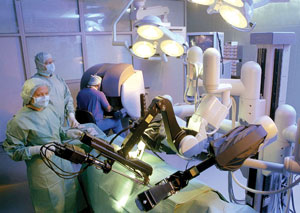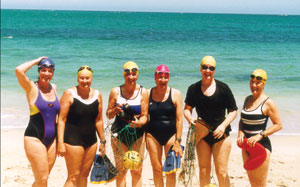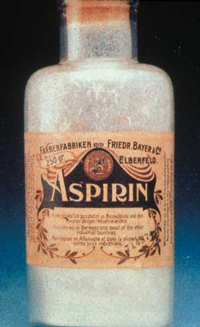Just do it!A sense of urgency pervaded several of the contributions.
“The world desperately needs an HIV vaccine”, says Kent (HIV medicine). “How can this slippery virus be checkmated? Where is its Achilles heel? What cells can be manipulated to exploit any weaknesses? What is the innate immune system doing? Can we generate an immune barrier to resistant strains? History will judge our dedication to this task.”
Driscoll (occupational health) sees an urgent imperative for research into “establishing links between occupational exposure and disease, preferably at a stage early enough to modify the disease process”. We also need “better understanding of health risks (and benefits) associated with the large-scale transfer of jobs from heavy industry to information and service industries”. Mindel (sexual health) says there is an urgent need to control the commonest bacterial sexually transmitted infection in Australia. “Chlamydia is a leading cause of infertility and a significant drain on the public purse.” A national strategy is needed to encourage yearly screening of sexually active adults under 25 years (with a suitable urine chlamydia test), with treatment of those infected and their contacts, supplemented by promotion of consistent condom use, and testing and treatment for other STIs.
For Mitchell (psychiatry) it is time to “grasp the nettle”. We now have new investigatory tools (genetic markers, structural and functional brain imaging), and have “rediscovered” gene–environment interactions (gene variants that increase the risk of mental illness, but only in conjunction with environmental factors). Thus, “the time is ripe for funding of large-scale, longitudinal studies to examine the roles and contributions of these factors combined (and in isolation) in determining the development and timing of onset of the major mental illnesses — schizophrenia, bipolar disorder and depression. Potential benefits in understanding aetiology, and thereby designing ‘tailored’ therapies, are enormous.”
Leeder (public health) also takes a “just do it” attitude. He quotes Jeffrey Sachs, Director of the Earth Institute at Columbia University (New York), who says public health is “whatever it takes to improve the public’s health”. And what are the imperatives in public health? “Developing a robust ethic for public health; inviting private enterprise, unions, insurers and the public to the public health table; and learning the skills to speak eloquently with these people. Whatever it takes!”
A doubling in prevalence of type 2 diabetes in Australia since 1980 means we simply can’t wait 10–15 years to do conventional research studies, says Chisholm (endocrinology). Intensive interventions (modified diet plus physical activity) can dramatically reduce diabetes incidence in predisposed people, but are prohibitively costly for whole communities. “To combat diabetes, obesity and cardiovascular disease, Australia should immediately implement ‘best-guess’ measures with progressive research analysis and modification (as was done to reduce cigarette smoking).”
In short, let’s just do it! The future belongs to those who dare!
Contributors: A/Prof Ian P Anderson, Dr Wilton Braund, Prof Ian D Cameron, Prof Peter A Cameron, Prof Donald J Chisholm, Prof Peter F M Choong, A/Prof Flavia M Cicuttini, Prof Enrico W Coiera, Prof Ian J Constable, Prof Stephen M Cordner, Prof David C Currow, Dr Geoffrey J Dobb, Dr Tim Driscoll, Prof Leon A Flicker, Prof Richard M Fox, Prof Mark F Harris, Dr Geoffrey S Hebbard, Dr Geoffrey H L Hirst, A/Prof Stephen J Kent, Dr Ross K Kerridge, Prof Stephen R Leeder, Prof Guy J Maddern, Dr Guy B Marks, Prof Robin Marks, A/Prof Richard M Mendelson, Prof Adrian Mindel, Prof Philip B Mitchell, Prof Kenneth A Myers, Dr Kenneth Ng, Prof Robyn E O’Hehir, A/Prof Stephen J O'Leary, Prof George Patton, Prof Lester J Peters, Prof Donal M Roberton, Dr Christopher C Rowe, Dr Lena A Sanci, Prof Susan Sawyer, A/Prof Ian A Scott, Prof Andrew M Tonkin, A/Prof Rowan G Walker, A/Prof Peter Waring, Prof Steve L Wesselingh, Prof James S Wiley, Prof Robert Williamson, Dr Alex D Wodak, Prof Fiona M Wood.














